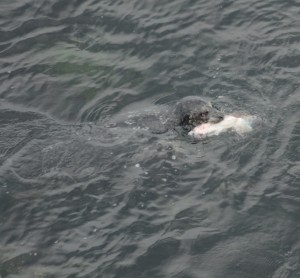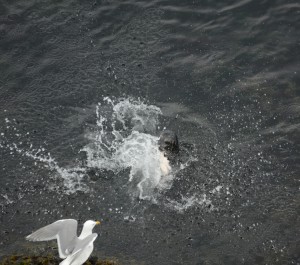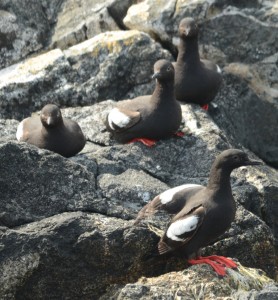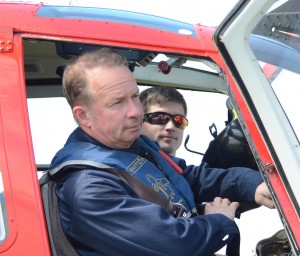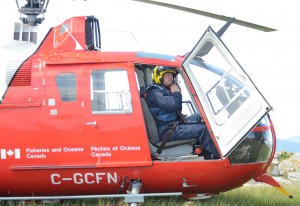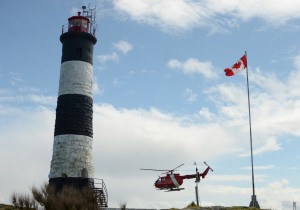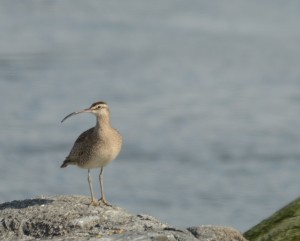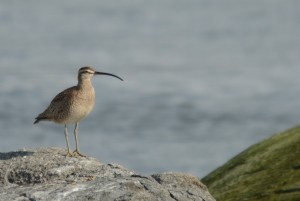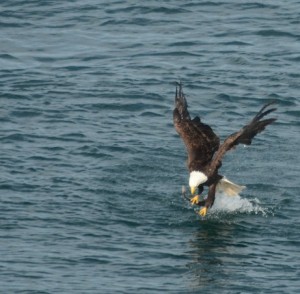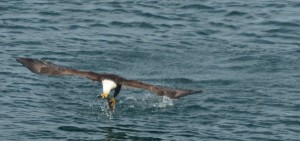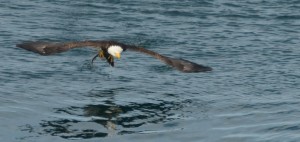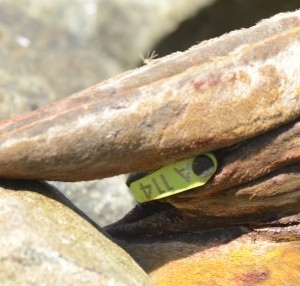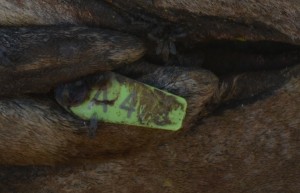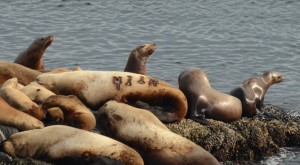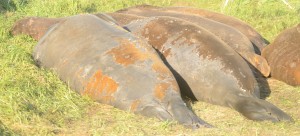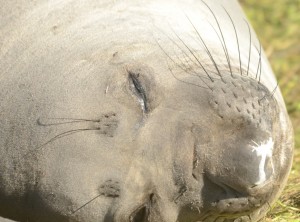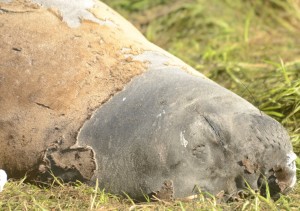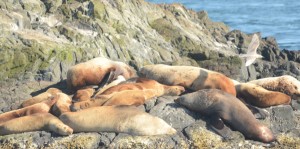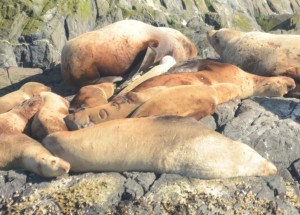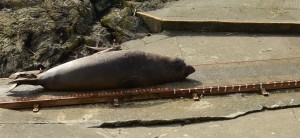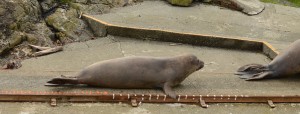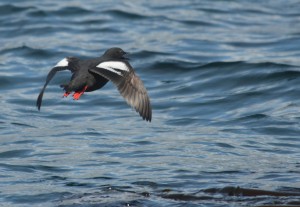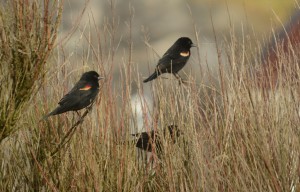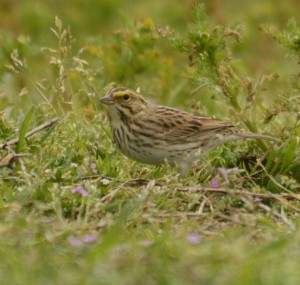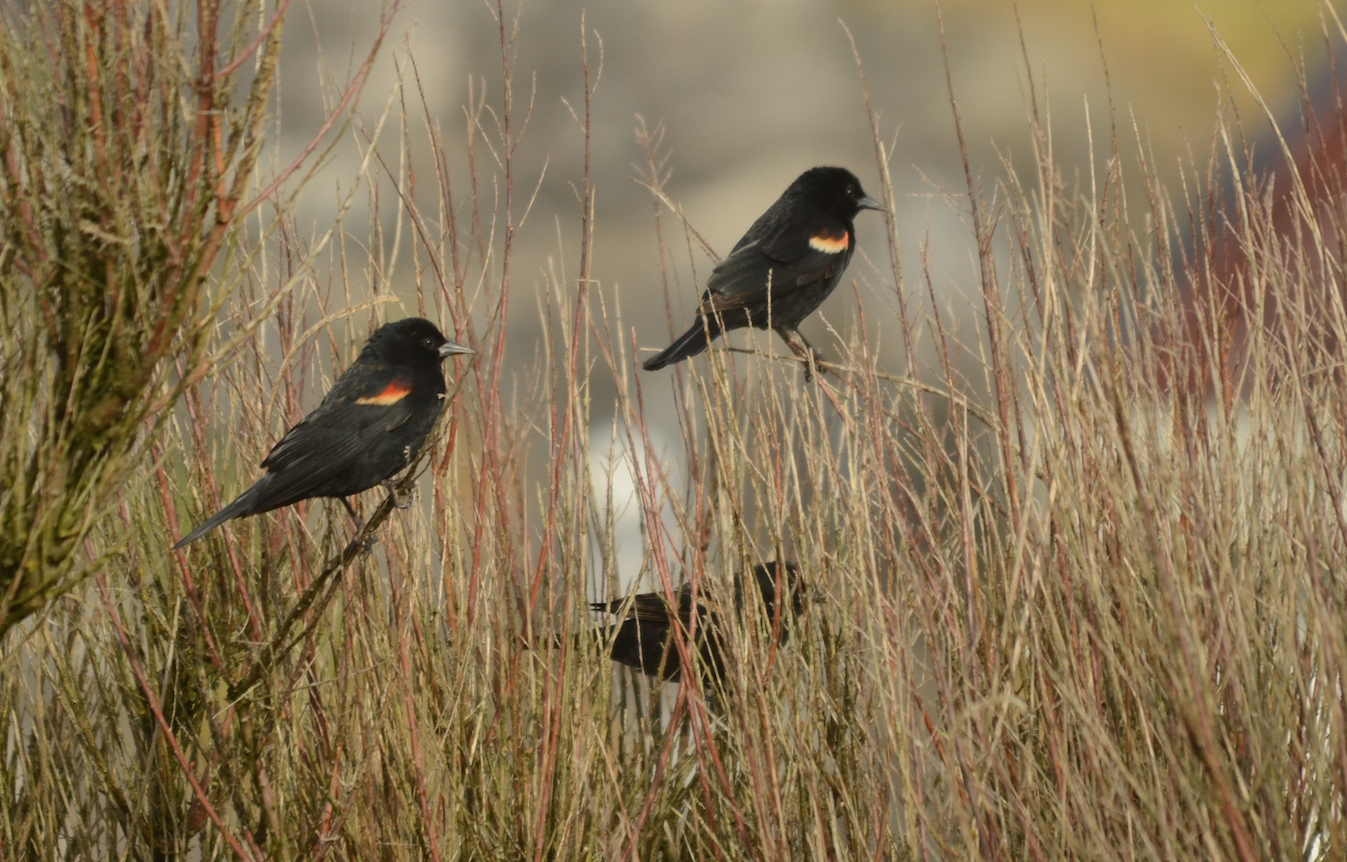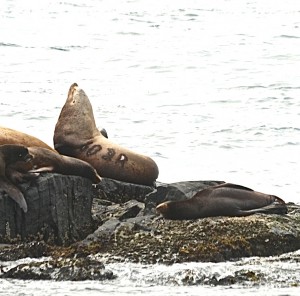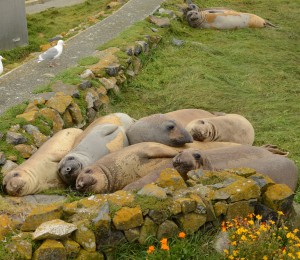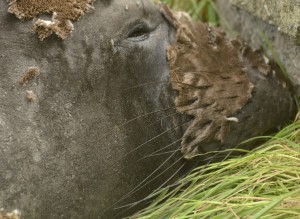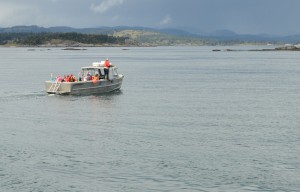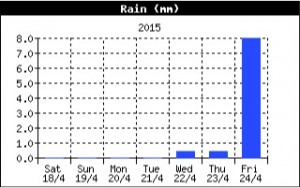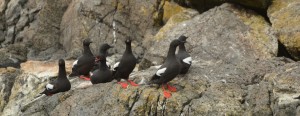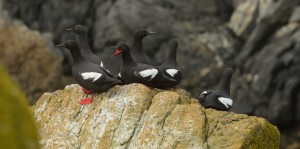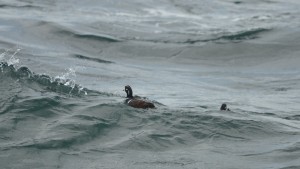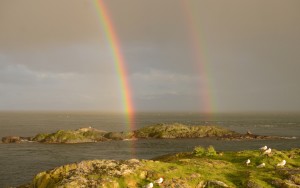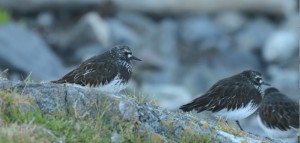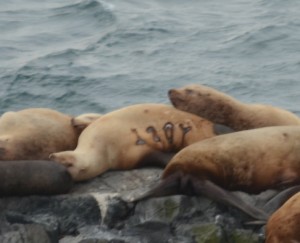The wind didn’t do much today other than puff a few light breezes in from the west with a few periods rising to 5 to 10 knots. It was mostly overcast with a few bright interludes and generally rather unremarkable in terms of weather. When the sun did shine through it had intensity foretelling the growing season. The barometer was fairly steady all day and is just starting to drop as I write this. The forecast is for a mix of sun and cloud, a chance of showers and a strong wind warning in effect for Friday afternoon.
There were nine whale watching vessels observed in the Ecological Reserve today, a bit of a spike, possibly due to a large cruise ship at Ogden Point.
I watched a Harbour Seal tearing up and eating a fish today. It looked like it might have been a lingcod (Ophiodon elongatus).
This female elephant seal has no tags and I have been calling her circle sister because of the circular marks on her back. As you can see her moult is almost complete and the circles are at least a little visible on the new coat so I will still be able to identify her as an individual.
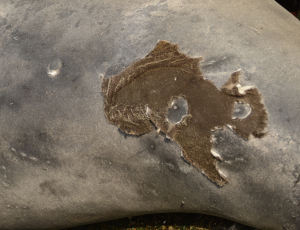
This is the back left side of the newly moulted “circle sister”, still identifiable by the small circular scars.
Today was animal census day and the results are as follows:
Northern Elephant Seals 30 (12 on Great Race)
Harbour Seals 102
California Sea lions 23 (includes brand C323)
Northern Sea lions 55 (includes brand 460Y)
Sea Otter 1
Canada Geese 18
Brant ~210 (passing through)
Pacific Loon 1
Harlequin Ducks 8
Pelagic Cormorants 5
Double Crested Cormorants 6
Bald Eagle 2 adults, 2 sub-adults
Killdeer 1
Black Oystercatchers 9
Black Turnstones 8
Whimbrels 10 (yesterday)
Pigeon Guillemots 268
Glaucous-winged Gulls 317 adults, 5 sub-adults
Common Raven 1
Barn Swallows 2
Savannah Sparrow 10
Red-winged Blackbirds 4
There were no visitors today. Chores were routine.

